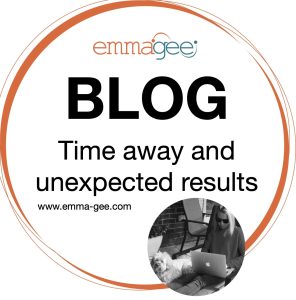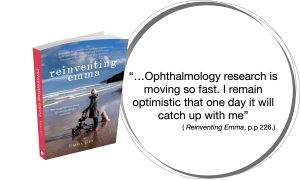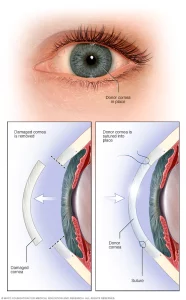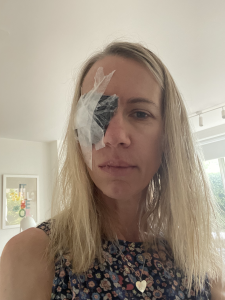 As you may have noticed, I’ve been quiet on the writing and posting for my social media for the last few months. It’s been a difficult time in my health and I needed to take a break from posting.
As you may have noticed, I’ve been quiet on the writing and posting for my social media for the last few months. It’s been a difficult time in my health and I needed to take a break from posting.
I am now ready to share more of my story of what my life has been like the last few months.
Much like writing my book, writing about my health is a source of therapy for me. And I’m excited to get back to it. My process of writing will look a little different from what I’ve done before, but it will still be a therapeutic way of healing and acknowledging my process and journey.
A few months ago, I had what’s called a corneal graft.
Since my stroke 18 years ago, my eyesight has been blurred, doubled (diplopia) and constantly moving (nystagmus) which has taken me many years to become accustomed to. Subsequent to my facial palsy, I also have no nerve supply to my right eye which has left it with no nourishment and it has always been prone to dryness, infection, ulceration and scarring.
Although I have had multiple procedures throughout my recovery, nothing has been able to reverse the gradual deterioration and progressive scarring in my right eye. Overtime, this has led to blindness. It has been like looking through a fly screen or a really dirty window all the time, leaving me with immense discomfort and being unable to see properly and work.
At the eight year mark in my stroke recovery, I was quietly optimistic that new treatments would be possible in my future to rectify this.
I wrote in my book,
“… Over the years I’ve adjusted to focusing on the spinning vision I have in my left eye. I’ve sought advice about bionic eyes, nerve grafts and other options. Ophthalmology research is moving so fast. I remain optimistic that one day it will catch up with me” ( Reinventing Emma, p.p 226.)
Thankfully, when revisiting my eye health, a procedure to reverse my poor vision called a corneal graft became possible.
 This procedure involves taking a portion of my own cornea and replacing it with a partial graft from my donor. Feeling so elated by this option and the chance to see my realm clearly again, I elected to have this procedure done in early December 2023.
This procedure involves taking a portion of my own cornea and replacing it with a partial graft from my donor. Feeling so elated by this option and the chance to see my realm clearly again, I elected to have this procedure done in early December 2023.
Although, I naively thought it would be a simple procedure. Of course, it wasn’t.
When I went in to have this procedure, my right eye was more scarred than predicted and the surgeon decided to remove and replace my entire cornea with my donors’ cornea.
I never imagined the physical and emotional toll it would take. The procedure seemed simple and it was predicted that after a fortnight of recovery, I’d resume things again as normal.
To further complicate things, not enough nourishment was getting to the new cornea and an ulcer formed on top of the graft. This has prolonged my recovery and the focus for my treatment has been on ulcer management rather than graft care.
With my eye becoming ulcerated and with little nourishment to the eye, keeping the environment moist to promote healing has been difficult. My atrophied right-sided facial muscles, makes sealing the eye hard. Although my Dr recommended wearing goggles to provide this moist, humid chamber, I’ve struggled to create this healing environment. As goggles don’t seal on my sunken face, I’ve adapted this with glad wrap. As a result of my ataxia/wobbling and limited sensation in my eye, applying the 2 hourly eye drops has been tricky – I’m reliant on support workers to do this. I also haven’t been able to work as I can’t tolerate screens or partake in other activities like swimming to manage my pain.
I have 25 stitches that are removed progressively. So far, I’ve had 6 stitches removed. I’m in a phase where the graft is accepted or rejected and the rejection can happen very suddenly. The symptoms of rejection are the same as my eyesight before the procedure; paine, visual issues and dizziness. This adds more difficulty because it’s incredibly hard to tell if rejection is happening.
Now, 3.5 months since the procedure, thankfully the ulcer is healing and responding well to the monotonous regime that has plagued my existence. I definitely found that the newfound independence I had created was slowly dissipating again and I was back relying on others, unable to work or do what I enjoyed. My life was about ‘disability’ not ‘ability’.
I felt like once again, “My wings had been clipped and I could no longer fly”. ( Reinventing Emma, p.p 98).
Again – not at all what I expected when I elected to have this procedure!
Then, I didn’t understand what was involved in it and the risks involved as much as I wanted to. I hope that for others considering this procedure, my explanation and experience is perhaps more helpful than what others will tell you and I hope this will help you understand yourself and your health even more.
The last three or so months have been a catalyst for pivoting. I’ve been forced to take time to reflect and take on a new direction.In order to heal, I need to change my attitude and be “proactive and not reactive” to my circumstances. I again, I had to change my attitude. (More on that in my next blog).
Throughout my recovery, there have been endless times where things have not eventuated as planned, but whenever I reflect on these difficult times, I am always so grateful that I tried.
I write in my book –
“…But today I’m glad I tried. I admit to being frustrated that it didn’t eventuate like I’d planned. But I know that I’ll get there with time and practice. The others around me keep going. When I’m ready, I take another deep breath and join them” (Reinventing Emma, p.p 238)
 I can’t wait to share more of my stories and experiences with you as I come back to writing and blogging.
I can’t wait to share more of my stories and experiences with you as I come back to writing and blogging.
I hope that you find inspiration and support in this as well.